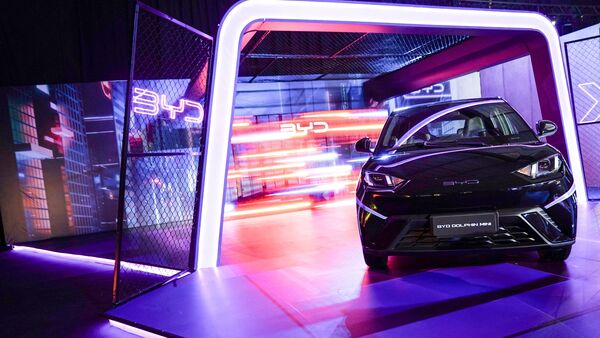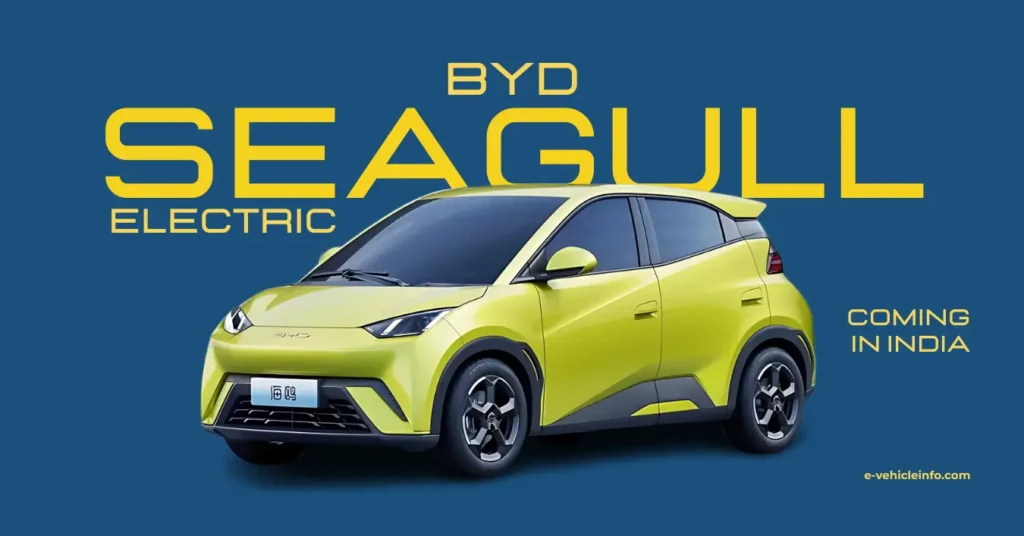
Table of Contents
Introduction
In a market dominated for years by Tesla, Chinese automaker BYD has pulled off a coup with the BYD Seagull, a compact electric hatchback that has rapidly climbed the sales charts to become the world’s top-selling EV. Offering a compelling mix of affordability, modern tech, and practicality, the Seagull is redefining how carmakers approach budget EVs. With India emerging as a strategic EV market, a critical question arises: Should BYD launch the Seagull in India next? Let’s explore the car’s global success, what makes it special, and why India could be a game-changing destination for its next chapter.
BYD Seagull Becomes World’s Best-Selling EV: Should India Be Its Next Big Market?
BYD Seagull: Global Success Story
Launched in 2023, the BYD Seagull quickly disrupted global EV markets. With a starting price of just $9,700 (approx. ₹8 lakh) in China, the Seagull became a mass-market favorite. It sold over 50,000 units in a single month, surpassing legacy and startup competitors alike, including Tesla’s Model Y and Model 3 in select global markets.
Key reasons behind the Seagull’s rapid rise:
- Ultra-affordable pricing
- Reliable Blade Battery technology
- Compact yet feature-packed design
- Low running costs
- Solid safety features
Its blend of affordability and cutting-edge electric tech has made the Seagull especially attractive in price-sensitive and urban markets.
Seagull Features and Specs: Small But Mighty

The BYD Seagull is a compact EV hatchback that delivers more than what its price tag suggests:
- Battery: 30.08 kWh or 38.88 kWh Blade Battery (LFP)
- Range: Up to 405 km (CLTC) depending on the variant
- Charging: Fast charging up to 30–40 minutes (30% to 80%)
- Power: 55 kW (74 hp) electric motor
- Top Speed: Around 130 km/h
- Interior: 10.1-inch rotating touchscreen, digital instrument cluster, advanced connectivity, and voice command features
- Safety: Equipped with advanced driver assistance systems (ADAS) in higher trims
These specifications make it one of the best-equipped cars in its segment, even outside of the EV space.
2026 Audi Q3 Breaks Cover Globally: Design, Features, Specs, Price & All You Need to Know
Why BYD Seagull Could Thrive in India
India is currently undergoing an electric revolution, with government support, PLI schemes, and growing consumer interest in EVs. While most offerings in India target the premium or mid-range EV segments, there’s a significant gap in the affordable EV market. This is where the BYD Seagull fits in perfectly.
Here’s why the Seagull could be a game-changer for India:
- Price Sensitivity of Indian Market
- Most Indian buyers in the EV space are first-time EV owners. The ₹8–10 lakh price bracket is a sweet spot where competition is minimal.
- If BYD can locally manufacture or assemble the Seagull, pricing it under ₹10 lakh could undercut rivals like the Tata Tiago EV and Citroën eC3.
- Urban Mobility Demands
- The compact size, excellent range, and fast charging make the Seagull ideal for Indian cities with dense traffic and limited parking.
- Battery Tech Advantage
- BYD’s Blade Battery offers safety and longevity — a key concern for Indian buyers who are still warming up to EVs.
- EV Ecosystem Support
- With expanding EV infrastructure and increasing government focus on electrification, India is becoming more welcoming to global EV brands.
Challenges to Consider
While the Seagull’s entry into India seems promising, a few hurdles exist:
- Import Duties: Fully imported models would be too expensive unless localized production is considered.
- Brand Recognition: BYD still lacks widespread consumer trust and recognition in India, although its Atto 3 and e6 have created some buzz.
- Dealer & Service Network: BYD would need to ramp up its sales and after-sales support to compete with local giants like Tata Motors and Mahindra.
How It Compares to Existing Indian EVs
| Model | Price (Ex-Showroom) | Range (Claimed) | Body Type |
|---|---|---|---|
| BYD Seagull (expected) | ₹9–10 lakh | Up to 405 km | Hatchback |
| Tata Tiago EV | ₹7.99–11.89 lakh | 250–315 km | Hatchback |
| Citroën eC3 | ₹11.61–13.41 lakh | 320 km | Hatchback |
| MG Comet EV | ₹6.98–8.58 lakh | 230 km | Mini Hatchback |
The BYD Seagull would likely offer more range and features than its Indian competitors in the same price band, making it highly attractive.
How Long Does It Take to Remove the ABS Light at a Service Center?
Conclusion: Time for the Seagull to Soar in India?
The BYD Seagull has already proven its worth globally, disrupting the EV market with its budget-friendly pricing and practical features. For India — a country with one of the fastest-growing EV markets and a pressing need for affordable electric mobility — the Seagull might just be the perfect fit.
If BYD chooses to localize production or opt for CKD kits to keep pricing competitive, the Seagull could easily become a top-seller in India. With the right marketing, service ecosystem, and pricing strategy, the Seagull could revolutionize India’s EV hatchback space — just as it has globally.
